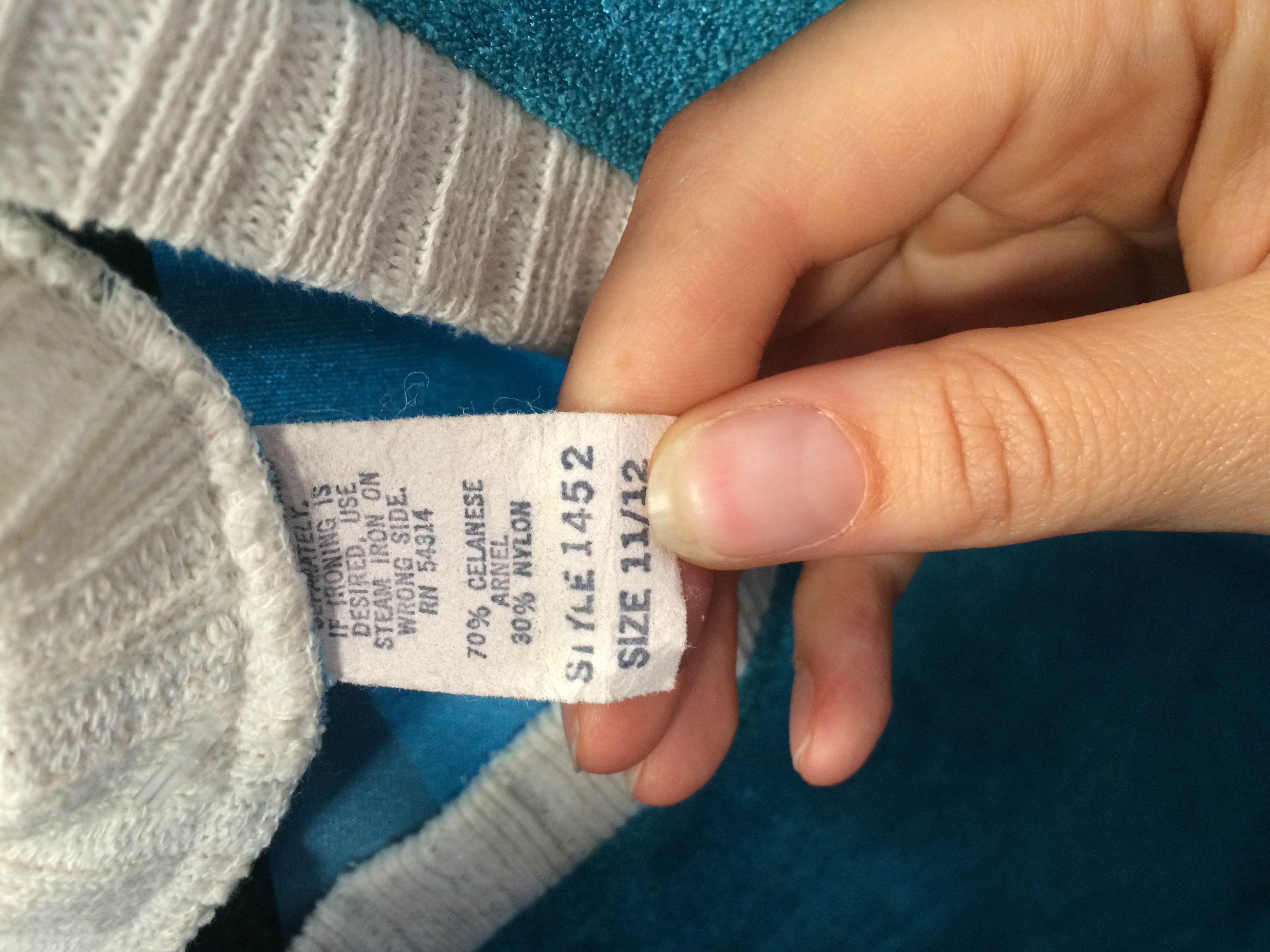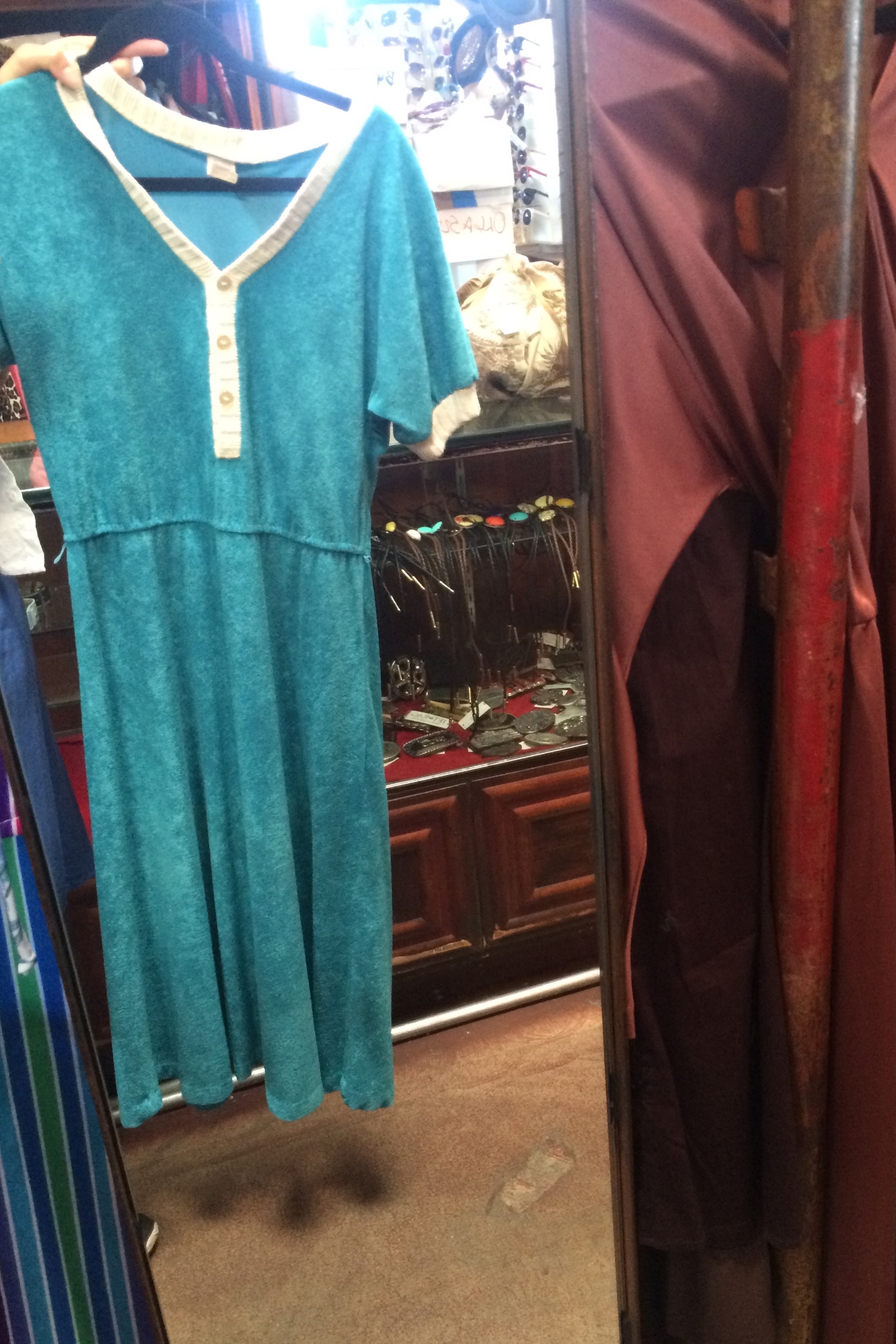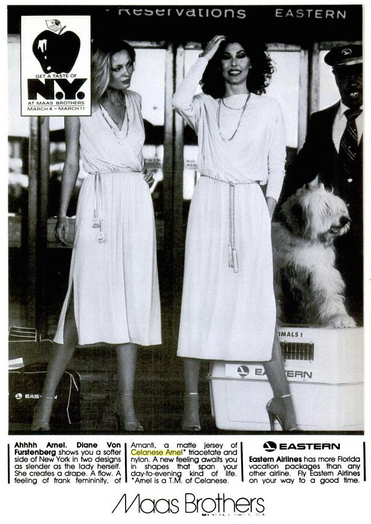Shopping at Jet Rag here in LA this week, I was browsing the vintage dresses, checking out content labels as always. I found something I'd never seen before on the tag of this blue terrycloth 1970s loungey-item: 70% Celanese Arnel 30%Nylon. Nylon, of course i know. But Celanese Arnel ??
I went home, did some googling, and learned that Arnel was the trade name for a triacetate fiber made by the Celanese Corporation of America. Its British counterpart was called Tricel. Triacetate, the generic name, is a member of the "synthetic cellulosic" family of fibers, like viscose - the raw material is cellulose, which comes from plants, but then it's broken down chemically and reconstituted into a fiber for textiles. So it's an artificial fiber with natural origins.
The company that eventually would produce Celanese Arnel was founded by Camille and Henri Dreyfuss, Swiss brothers and chemists (also the inventors of synthetic indigo!), who began developing acetate from cellulose in 1908 intending it as a non-flammable alternative to celluloid. The Dreyfuss's new material was quickly adopted for photographic film (by Pathé cinema studio in Paris, among others) as well as by the British military as an airplane lacquer.
The company expanded to the US after World War I and began producing acetate fiber in the US in 1924 at a factory in Cumberland, Maryland. Business boomed. At the time, acetate was a new material, cheaper and easier to care for than silk, though it soon had competition from an explosion of other branded synthetics in the mid-20th century. Triacetate, introduced as Celanese Arnel in 1955, offered improved "wash and wear" performance from the original acetate, and also had a distinctive shine. Think velour, tracksuits - 20th century classics of synthetic fabric.
In 1986, Arnel's time was up when the Celanese Corporation announced it would end production of its triacetate fiber in the face of its declining popularity, combined with tighter toxicity standards from the US government.
Turns out methylene chloride, one of the solvents used in triacetate production, is really toxic and carcinogenic. The fiber is no longer produced anywhere in America but can be found in European and Japanese fabrics. So watch out! It's fun to encounter in the vintage section but triacetate is not a fabric for the future.
https://en.wikipedia.org/wiki/Camille_Dreyfus_%28chemist%29
http://www.cirfs.org/manmadefibres/fibrerange/Acetate.aspx
http://www.highbeam.com/doc/1G1-4105763.html



